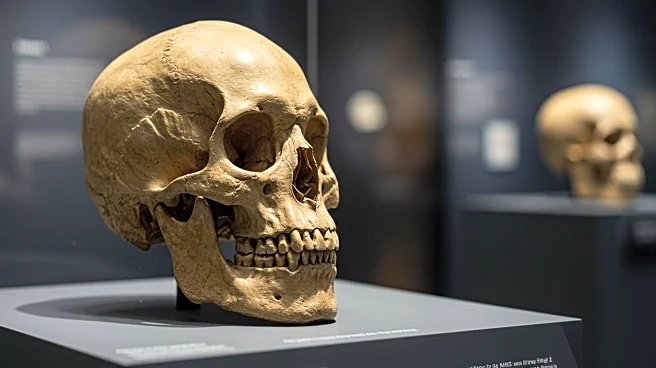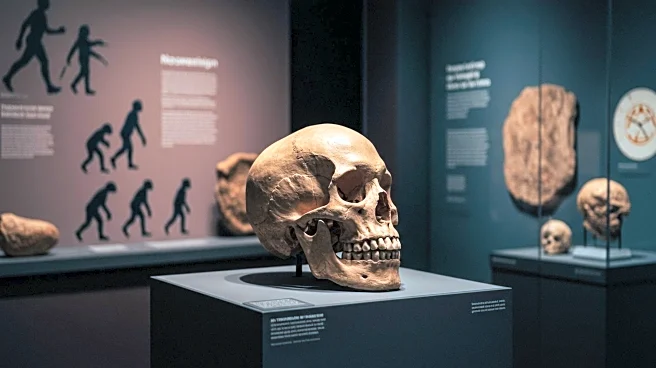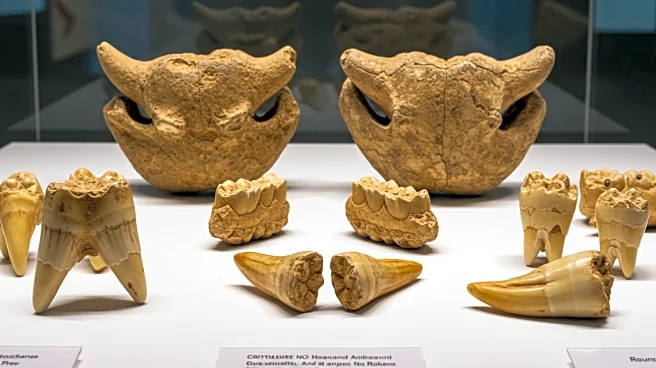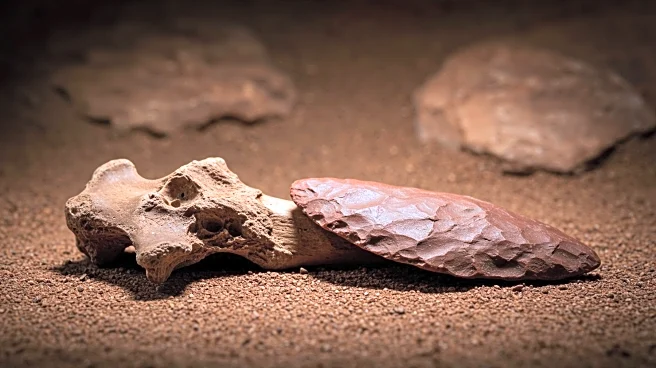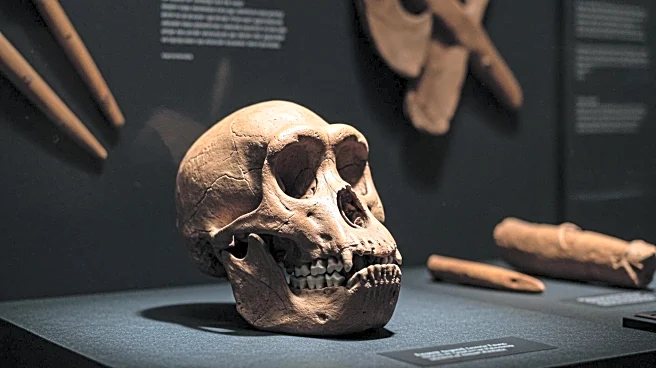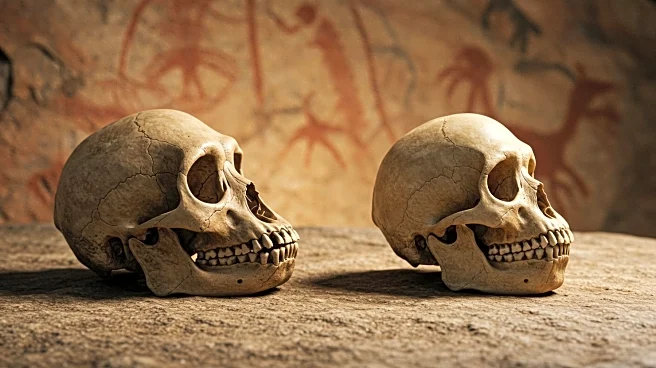Rapid Read • 7 min read
A skull discovered in Petralona Cave, Greece, has been identified as neither human nor Neanderthal, but rather belonging to Homo heidelbergensis, a distinct group of ancient humans. The skull, known as the Petralona Man, was dated to be at least 277,000 years old using uranium-series dating of calcite deposits. This finding places the skull in the Middle Pleistocene era, suggesting that Homo heidelbergensis coexisted with Neanderthals in Europe. The study provides a more precise age for the skull, which has been debated since its discovery in 1960, with previous estimates ranging from 170,000 to 700,000 years.
AD
The identification of the Petralona skull as Homo heidelbergensis offers valuable insights into the diversity and distribution of ancient human species in Europe. It supports the theory that multiple human lineages coexisted and interacted during the Pleistocene era, contributing to the complex evolutionary history of modern humans. This discovery enhances the understanding of human evolution and migration patterns, highlighting the role of Homo heidelbergensis in the development of later human species, including Neanderthals and Homo sapiens.
Future research may focus on further analyzing the Petralona skull and other similar fossils to gain a deeper understanding of Homo heidelbergensis and its interactions with other human species. Scientists may also explore the genetic and cultural exchanges between these groups, which could provide insights into the evolutionary processes that shaped modern humans. Additionally, the study encourages the use of advanced dating techniques to reassess other ancient fossils, potentially refining the timeline of human evolution.
AD
More Stories You Might Enjoy
